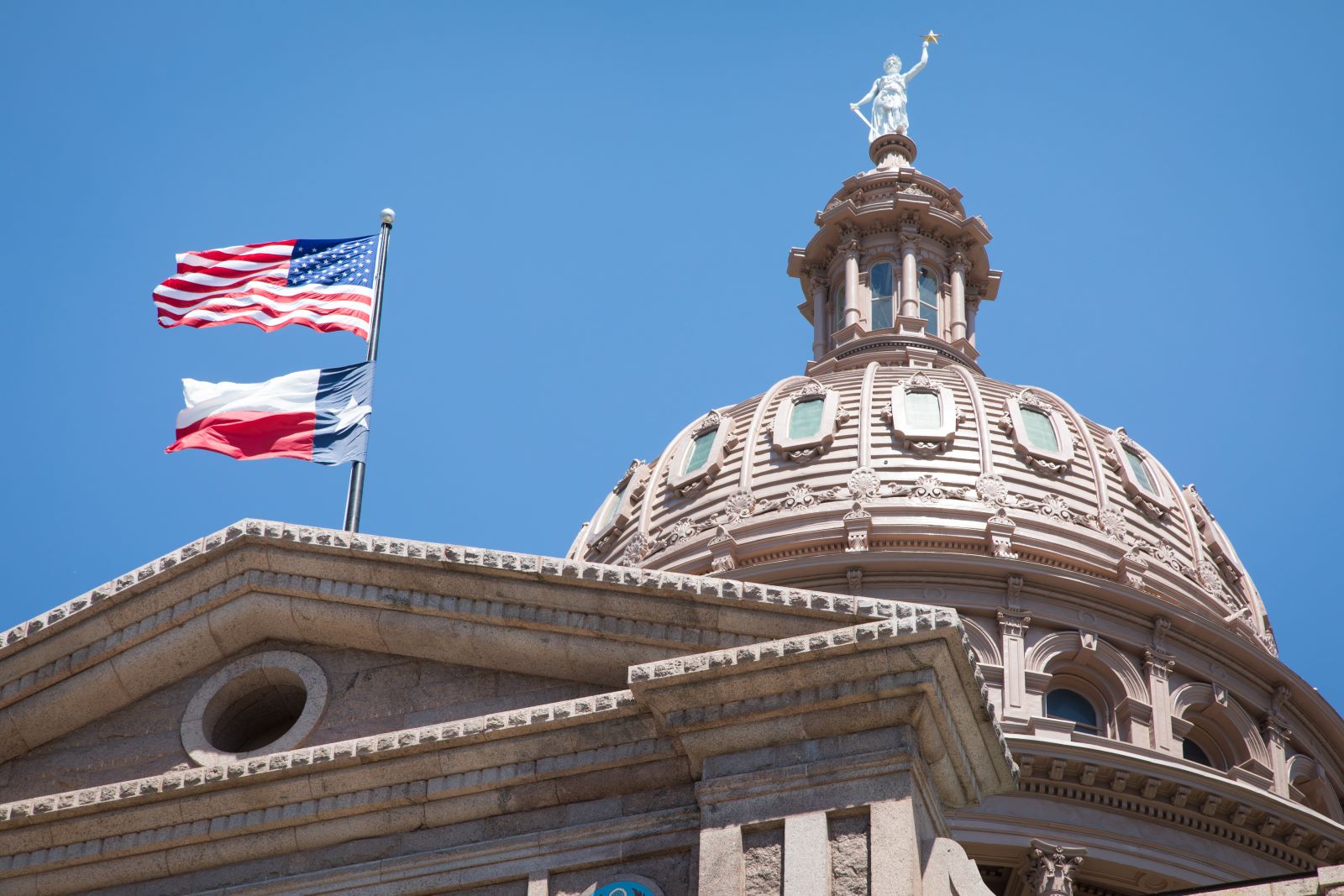Texas is renowned for its robust economy, but beneath the surface, a ticking debt time bomb poses a grave threat. With a staggering $70 billion in combined state and local debt, how long can the Lone Star State maintain its fiscal reputation without serious reforms?
1. Soaring Local Government Debt

Local government debt in Texas is more than four times the state debt, totaling a staggering $192 billion. This translates to $7,505 per capita, placing Texas second only to New York in terms of local debt per resident. Over the past decade, this debt has grown by 144%, significantly outstripping the combined rate of population growth and inflation.
2. High School Stadium Splurges

Texas’s love affair with high school football has led to exorbitant spending on athletic facilities. For instance, the $60 million stadium in Allen, funded by a $119 million bond, exemplifies how local districts are prioritizing sports over educational essentials. These investments have dramatically increased school districts’ debt loads across the state.
3. Pension System Shortfalls

The state’s 81 retirement systems for local government workers are alarmingly underfunded. Not only are these pension plans poorly funded, but they also suffer from a lack of transparency, complicating efforts to accurately assess their financial health. This has led to increased contributions from municipalities, straining local budgets even further.
4. Escalating School Debt

Debt from public school districts is the largest component of local debt, increasing by 155% over the last decade. Remarkably, debt service now accounts for 10% of total school spending in Texas, a significant rise from 7% a decade ago. This shift diverts funds from educational improvements to debt repayment.
5. Infrastructure Overinvestment

Beyond schools, Texas municipalities have also invested heavily in infrastructure projects, often financed through debt. These projects, while necessary for growth, have added to the debt burden, challenging future fiscal sustainability without consistent revenue growth or cuts elsewhere.
6. Dependency on Bond Markets

Texas’s reliance on bond markets to fund projects exposes the state to market volatility and interest rate risks. This dependency can lead to increased costs of borrowing and fiscal stress during economic downturns, as witnessed during past recessions.
7. Lack of Fiscal Transparency

The complexity and opacity of Texas’s financial obligations, especially at the local level, hinder citizens’ understanding of the debt crisis. Without clear and accessible financial data, voters and policymakers struggle to make informed decisions about debt issuance and management.
8. Inadequate State Oversight

While Texas prides itself on limited state government, this has translated into insufficient oversight of local debt practices. The lack of robust state-level regulations allows local entities significant leeway in debt accumulation, sometimes resulting in irresponsible borrowing.
9. Unfunded Liabilities

Texas faces a growing problem with unfunded liabilities, particularly related to healthcare and other post-employment benefits for public workers. These liabilities are often not fully accounted for, understating the true fiscal challenges.
10. Rising Healthcare Costs

The increasing cost of healthcare for public employees is rapidly becoming a significant fiscal burden for local governments in Texas. As these costs escalate, they consume a larger portion of the budget, limiting funds available for other services.
11. Economic Dependency on Oil

Texas’s economy is heavily reliant on the oil sector, which can be highly volatile. Fluctuations in oil prices can dramatically impact state and local revenues, exacerbating debt challenges during periods of economic downturn.
12. Regulatory Risks

Changes in federal and state regulations can impose additional costs on municipalities, forcing them to increase debt to comply with new mandates. These regulatory changes often come without accompanying funding, leaving local governments to foot the bill.
13. Demographic Shifts

As Texas’s population grows and ages, the demand for public services increases, leading to higher spending and, consequently, more debt. This demographic pressure is set to intensify, necessitating careful fiscal planning to manage the associated costs.
14. Water Resource Management

Investments in water infrastructure to meet the demands of a growing population and industrial activity have led to increased debt. Managing water resources efficiently remains a critical challenge for Texas, especially in drought-prone areas.
15. Educational Disparities

Funding inequalities among school districts lead to uneven debt distribution, with poorer districts often taking on disproportionate debt to meet basic needs. This exacerbates educational disparities and financial instability in vulnerable communities.
16. Credit Rating Concerns

As debt levels rise, Texas risks potential downgrades to its credit rating, which could increase borrowing costs and make future debt more expensive. This would create a vicious cycle of debt accumulation, further straining fiscal resources.
17. Political Resistance to Tax Increases

There is significant political resistance to raising taxes in Texas, a state known for its low-tax environment. This limits the ability of state and local governments to increase revenues to service or reduce debt, relying instead on borrowing.
18. Market Dependency

Texas’s ability to service its debt is highly dependent on maintaining strong economic growth and stable financial markets. Any downturn can quickly lead to fiscal distress, highlighting the precarious nature of its current debt strategy.
19. Federal Funding Uncertainty

Changes in federal funding allocations, especially for infrastructure and healthcare, can dramatically impact Texas’s budget planning and debt levels. Reliance on federal dollars is a double-edged sword, providing relief but also uncertainty.
20. Environmental Challenges

Climate change poses significant risks to Texas’s infrastructure and economy, potentially requiring substantial investment in resilience measures. Funding these initiatives could further complicate the state’s debt situation.
21. Legal Challenges

Texas faces ongoing legal battles related to debt practices and public funding allocations. These disputes can lead to unforeseen expenditures, complicating fiscal management and planning.
Hanging by a Fiscal Thread

As Texas grapples with these 21 daunting debt challenges, the question remains: Can it innovate its way out of debt, or will fiscal shortsightedness take its toll? Will the Lone Star State redefine resilience, or become a cautionary tale of fiscal excess?
DeSantis Under Fire As Florida Left Underwater

Florida residents are struggling this hurricane season, and many are pointing the finger at a certain Governor. DeSantis Under Fire As Florida Left Underwater
Factory Shutdowns in Illinois Devastate 1000 Workers

While the job market seems to be in relatively good shape, some states are feeling the burn – Illinois being one of them. Factory Shutdowns in Illinois Devastate 1000 Workers
Largest Data Breach Exposes Full Names, Social Security Numbers, Driver’s Licenses, and More of 3 Million Americans

A debt collection company just experienced a massive data breach that makes your usual cases of identity theft look like child’s play. Largest Data Breach Exposes Full Names, Social Security Numbers, Driver’s Licenses, and More of 3 Million Americans
Featured Image Credit: Shutterstock / rarrarorro.
The content of this article is for informational purposes only and does not constitute or replace professional financial advice.
For transparency, this content was partly developed with AI assistance and carefully curated by an experienced editor to be informative and ensure accuracy.
The images used are for illustrative purposes only and may not represent the actual people or places mentioned in the article.

